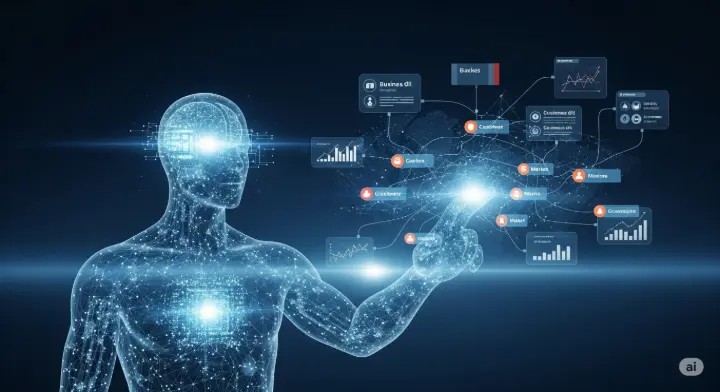It's no secret that AI is changing the business world. But while everyone's talking about the impressive things large language models (LLMs) can do, a new, more powerful generation of AI is emerging: autonomous agents. These aren't just chatbots; they're goal-driven systems that can plan, reason, and act to complete complex tasks without constant human oversight.
But here’s the problem: standard LLMs have a very short memory. They forget everything after a conversation ends and often "hallucinate" or invent facts because they lack a reliable, structured source of truth. That's where knowledge graphs come in.
Think of a knowledge graph as the brain of an autonomous agent. It's a digital map of all your business's data, showing how everything from customers and products to processes and locations are interconnected. This isn't just a simple database; it's a web of meaningful relationships. When you combine this powerful, organized memory with an autonomous agent, you get an AI that can not only generate text but also reason and act based on a deep understanding of your business.

Why Knowledge Graphs are the Secret to Smarter AI Agents
Without a knowledge graph, an AI agent is like a talented but forgetful employee. It might be able to write a great email, but it can't remember the specifics of a client's last order or the details of a previous project. Knowledge graphs solve this by providing two critical functions:
- Long-Term Memory: A knowledge graph acts as a persistent, shared memory for the agent. Instead of a conversation-by-conversation reset, the agent can reference a unified, up-to-date knowledge base. It remembers past actions, learns from new data, and uses that information to inform future decisions.
- Reasoning and Context: Knowledge graphs provide the context that LLMs often lack. An agent can traverse the graph to understand not just what a piece of data is, but how it relates to everything else. This allows it to make complex inferences and logical deductions. For example, an agent can infer that "a customer who bought product X from a specific marketing campaign is also likely to be interested in accessory Y."
This combination is a game-changer. It moves AI from being a reactive tool to a proactive, goal-oriented partner.

How this Contributes to Business Success
So, what does this actually mean for your company? The benefits are tangible and directly impact your bottom line.
1. Enhanced Customer Experience and Personalization
Autonomous agents powered by knowledge graphs can create a truly personalized customer experience. Imagine an agent that can access a customer's entire history, including their purchase habits, support tickets, and even social media sentiment. It can proactively identify a problem, offer a tailored solution, and even generate a discount code without human intervention. This leads to higher satisfaction and brand loyalty.
2. Supercharged Business Intelligence
Forget static dashboards and manually-generated reports. An AI agent can use a knowledge graph to analyze data from across your organization in real-time. It can identify the root cause of a sales dip, forecast a supply chain disruption before it happens, and recommend the most profitable next steps. This enables data-driven decision-making at a speed and scale that was previously impossible.
3. Automation of Complex Workflows
Autonomous agents can handle multi-step, complex tasks that traditional automation can’t. They can manage entire workflows, such as:
- Supply Chain Management: An agent can monitor inventory, predict demand, and automatically reroute shipments when a disruption occurs.
- Financial Fraud Detection: By mapping out relationships between accounts, transactions, and individuals, an agent can identify sophisticated fraud rings that traditional, rule-based systems would miss.
- IT Operations: An agent can diagnose and resolve IT issues by analyzing system logs, user reports, and network configurations, often before a human is even aware of the problem.
4. Increased Efficiency and Cost Savings
By automating these complex processes, your teams are freed from tedious, repetitive tasks. This isn't just about saving time; it's about reallocating human capital to more strategic, creative, and high-value work. This boosts productivity, reduces operational costs, and gives your business a significant competitive advantage.
The future of enterprise AI isn't just about big, generative models. It's about combining those models with the structured, reasoned intelligence of knowledge graphs to create autonomous agents that can truly understand, learn, and act on behalf of your business. This is where the real value lies, and it's the next frontier for companies looking to stay ahead.